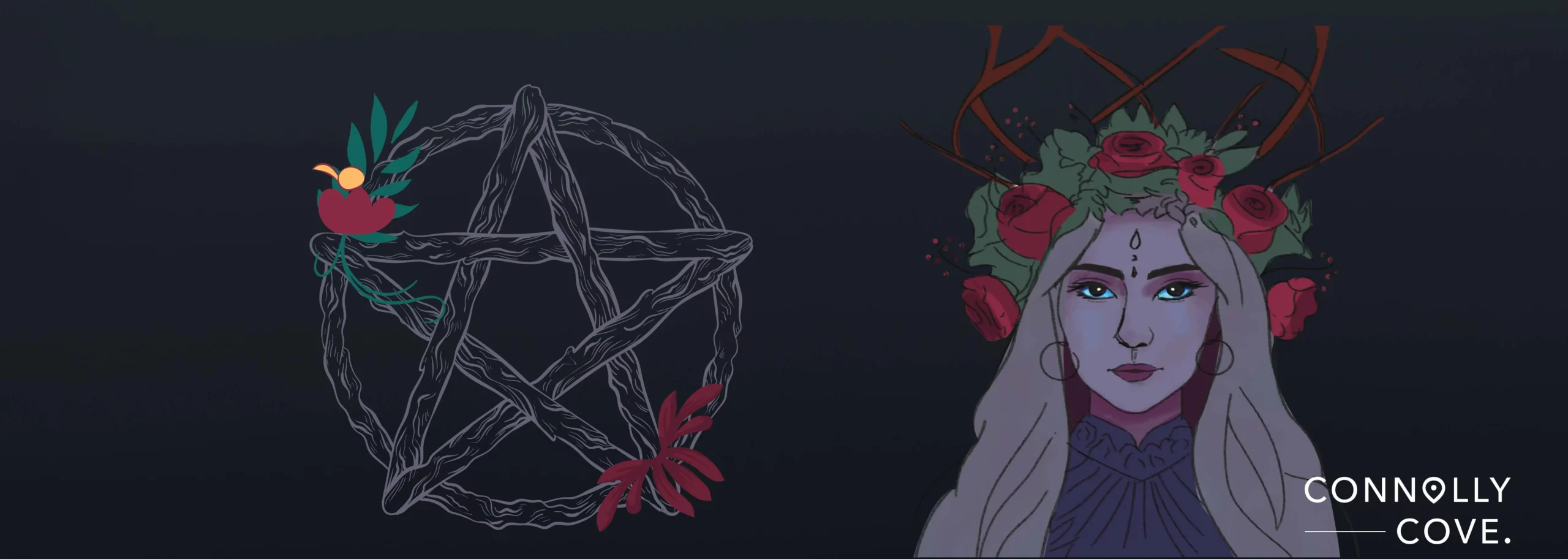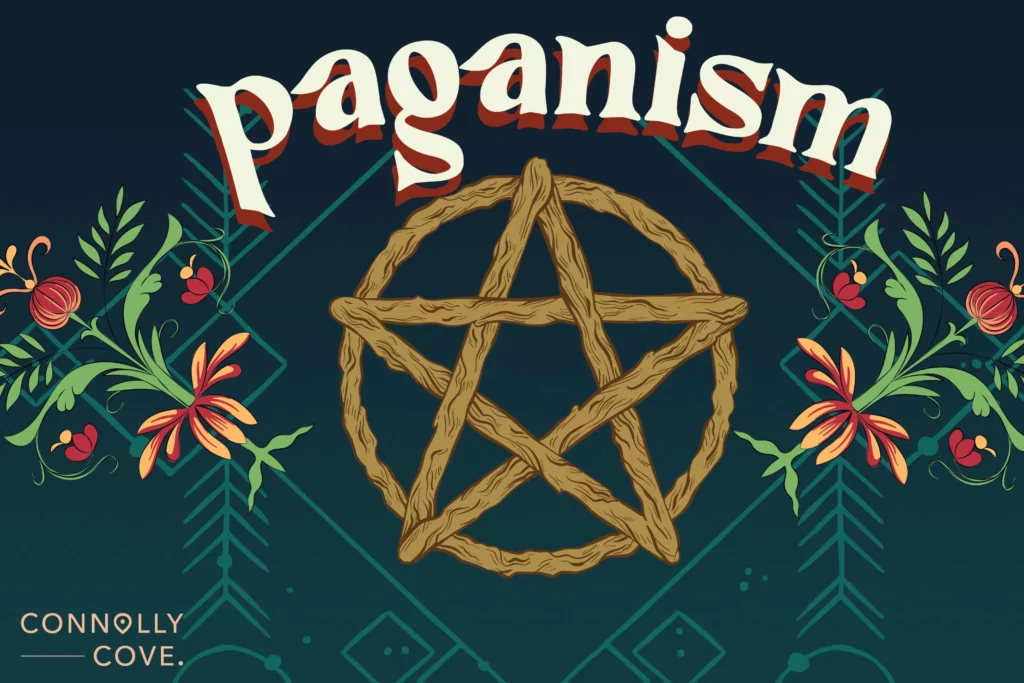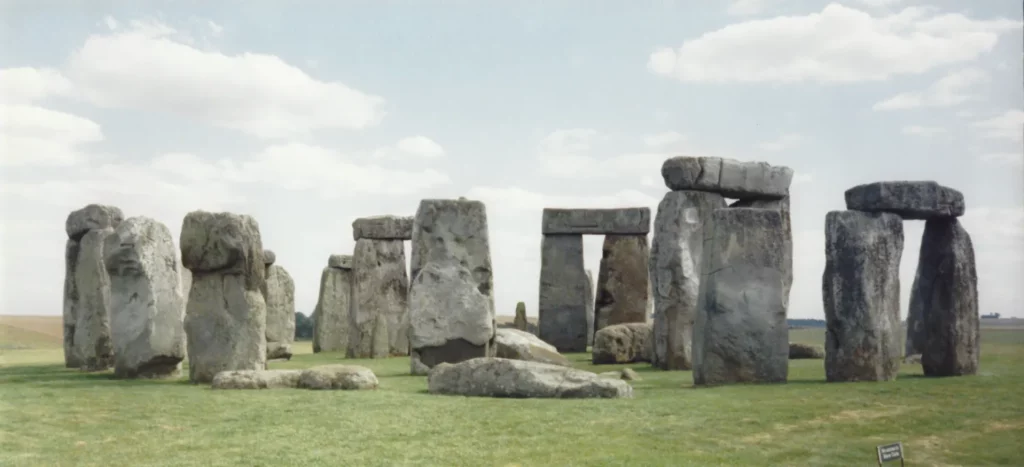Paganism: Long History and Amazing Facts

Updated On: November 09, 2023 by Ciaran Connolly
Do you find yourself intrigued by the mystery of non-Christian faiths? One such religion is Paganism!
The following is interesting whether you are curious about Paganism or willing to subscribe to it.
Where does Paganism come from?
The word “pagan” derives from the Latin “Paganus”, meaning “country inhabitant,” and “paganism” refers to polytheism, as in ancient Rome. Another common definition of a pagan is someone who does not practise any religion and instead finds meaning in sensual pleasures, financial wealth, and other forms of hedonism. Some modern varieties of Paganism, including Wicca, Druidry, and Gwyddon, are also known as “neo-paganism,” a more recent phrase.
Despite the wide variety of Paganism’s many faiths and rituals, its adherents share certain common core ideas. Case in point:
- Each person is seen as an integral part of Earth, and the physical world is seen as a positive place to enjoy.
- The Divine manifests itself in all that exists, and all living things—human and otherwise—are created in God’s image. This means that everyone is a deity or goddess.
- There are no spiritual leaders or saviours for most paganisms.
- Personal accountability outweighs doctrinal adherence.
- There is a significant connection between the moon and the sun in Paganism.
Paganism and The Roman Empire
People who continued to practise pre-Christian polytheistic traditions after Christianity spread through the Roman Empire became known as “Pagans.” The Roman Empire had a crucial role in the propagation of Christianity throughout Europe. Before this, European people had polytheistic religions heavily influenced by natural cycles like the moon and the seasons. The term “Paganism” was coined at this time to denigrate non-Christian religions and the “peasantry.” This fact was then exploited against them to reinforce stereotypes of their supposed inferiority.
“Fake gods,” or any deities that were not God in the Christian, Jewish, or Muslim sense, were considered to be part of a Pagan religion throughout and after the Middle Ages. The phrase has been passed down through the ages and was first employed by those who practised pagan religions in the nineteenth century. To adapt their ancient polytheistic ideas to the modern world, self-described Neopagans created new religious movements in the 20th century.

Modern Paganism
Neopaganism, or Modern Paganism, is a branch of Paganism that combines pre-Christian ideas (such as nature worship) with contemporary behaviours. The ideas of Neopaganism are based on historical records, written narratives from the past, and the results of anthropological fieldwork. Further, there are different varieties of Paganism, and those who follow them may or may not also follow one of the major religions, such as Christianity, Islam, or Judaism.
New Age paganism has a global following. Traditions and practices that predate Christianity, Judaism, and Islam provide the basis of their religious beliefs. Since the early 1900s, Christianity has been on the decrease in Western Europe and the United States, and as a result, Neopaganism has flourished in these regions. As Christianity and other major world faiths have been dominant, Neopaganism has been persecuted in some nations, making it difficult to get an accurate figure of the number of Pagans or even Neopagans around the world. Countries including Russia, the United Kingdom, Canada, the United States, Germany, Russia, Lithuania, and Australia are thought to have a larger pagan population.
Numerous urban, college-educated, middle-class Pagan communities can be found across North America, especially in the United States but also in Canada. However, accurate data on these communities is unavailable because the government does not track them. There are many Neopagan communities dispersed across the United Kingdom. These communities practise religions like Wicca, Heathenry, and Druidry.
In most of the country of Germany, you can find adherents of the Pagan religion of Heathenism. The group’s ideas are grounded in Norse and Germanic mythology, such as the idea that the planet Earth is a branch of a massive tree known as Yggdrasil.
Although Pagans make up a sizable portion of the population, the religion’s slow but steady growth is partly because of the lack of any organised efforts to disseminate it, in contrast to the major world faiths. In addition, the history, culture, and customs of a community have a significant impact on how Paganism is practised there.
Norse Paganism
Norse Paganism is an ancient religion that dates back to the time before Christianity was introduced to Scandinavia. The Germanic people of the Iron Age are the forefathers of the Norse religion, which continued to grow even after Scandinavia was Converted to Christianity.
Conversion to Christianity
Many early Christian kings converted to Christianity for political and economic reasons. Instead of committing to either Christianity or another religion, some commoners incorporated the Christian God into their existing pantheon of deities. This meant that many aspects of Pagan mythology, folklore, and rites were absorbed into Christian culture and vice versa, ensuring that the Norse religion would never die out completely.
The Old Norse Religion, which includes elements of Norse Paganism, has seen a resurgence in popularity in recent decades. Asatru, which is recognised as an official religion in several nations, and Heathenry (which isn’t purely Norse Pagan) are two such instances.
Pagan Inscriptions
Due to its oral transmission from the Iron Age, the Old Norse religion does not have a canonical text comparable to the Christian Bible.
Only picture stones and inscriptions on grave monuments survive from those times, and they depict their gods and tell stories about their mythologies. Artefacts and ship burials are just two examples of the types of archaeological evidence that can shed light on Viking Age religious practices.
We learn about this ancient faith mostly from Roman writers like Tacitus and Julius Caesar, as well as from Old Norse writings written after Christianity spread to Scandinavia. The Hávamál, the Prose Edda written by Snorri Sturluson, the Heimskringla, and the Landnámabók are among the most well-known Icelandic sagas.

Norse Pagan Beliefs
- It is a polytheistic religion; that suggests they adhere to a polytheistic belief system. These deities are just like us in many ways: they fall in love, start families, and argue.
- They adopted a philosophy of the Natural World. Culture and religion are inextricably intertwined; in fact, before the Christian era, the word “religion” did not even exist in pre-Christian Scandinavia. Instead, the divine was an inherent element of everything: gods, goddesses, spirits, and other magical creatures can be found anywhere, from animals and plants to rocks and buildings.
- The importance of ancestors to the family unit cannot be overstated. They needed to be revered in some way so that they would bestow their blessings on the family and make sure they lived happily and prosperously. If they weren’t put to rest, they’d cause misfortune by haunting the living.
- Death was perceived as a natural part of life, and there were no afterlives to reward or punish the living, unlike in Christian belief.
Norse Religion Rituals
The essential goal was to ensure the continuation of human civilisation and its subsequent revitalisation. This is why, despite some commonalities, rituals and customs were not unified in either Pre-Christian Scandinavia or the contemporary era.
There is evidence for large-scale national religious festivals, but most feasts were associated with rural life and agriculture. Some blóts, or blood sacrifices, were held during the full and new moons and during the growing seasons to appease the gods and ensure a bountiful harvest, which was essential to the people’s continued existence.
Animals were typically sacrificed, but humans were only offered up to the gods in times of dire need, such as during times of famine or war, when prisoners were used as an offering.
Artefacts were frequently left as sacrifices in wetlands and bogs (for example, bracelets, weapons or tools). This approach, along with the use of mead, is favoured in contemporary rituals.
Ceremonies of transition were held to mark significant life events, including the naming of a child, a new marriage, and the passing of a loved one.
Finnish Paganism
Before the arrival of Christianity in Finland and Karelia, pre-Christian Paganism existed. Finnish Paganism has commonalities with its Nordic and Baltic counterparts. It was widely held among Finns that various deities inhabited the world.
Finnish Paganism Beliefs
Finnish Paganism, like Norse Paganism, was rooted in the belief in supernatural beings. As a result, people thought both large and minor spirits lived in the natural world. Larger-than-life spirits were deities with titles.
Each individual human being had a split soul. The concepts of “self” and “me” were conceptually distinct. A person is not dead but gravely unwell if his soul, or sense of “self,” leaves his body. A shaman, a wise man who has the ability to perform magic, may access the afterlife and return the spirit.
The bear held sacred status among the people. Once a bear was killed, a feast was held in their honour, a ritual known as Peijainen. The ritual was performed to appease the bear’s spirit. If people ate bears in the future, the souls of bears who died with a smile on their faces would be reincarnated into other bears. Killing a swan was thought to be the same as taking one’s own life because of the bird’s sacred status.
Finnish people held certain forests, trees, and stones sacred. Sacrifices were made to various gods and spirits at these sites. The intention of the sacrifice was to bring joy to the spirit. Then, the spirit would aid humanity. A fisherman, for instance, would be assured of a bountiful haul if the sea’s spirit was upbeat. Small items like money, flowers, silver, alcohol, and food were left as offerings to the dead in later eras.

Modern Paganism in Finland
Traces of Paganism can be found in many social aspects, including but not limited to folklore and epics, toponymy, rituals, and medicine. Juhannus (midsummer day), which occurs on the Saturday between 20 and 26 June, dates the most significant modern pagan celebration. For the pagan midsummer pyre or bonfire, people practise johannes-magic.
Hobbyists of contemporary Finnish Paganism have made attempts to resurrect the country’s ancient pagan practices. It all started with an attempt to learn more about the nature of Finnish Paganism, its associated supernatural and God beliefs, and its religious rituals and observances. Due to a lack of data, much has had to be made up or left out of the ongoing project.
Although many Finns identify as pagans, they share a wide range of beliefs and practices. Others see pagan gods as real beings who influence life and fate, while still, others see them as symbols of the spiritual world and a way to keep up cultural heritage or add fun content to life.
Some modern-day Finns are known to maintain sacred woods and worship gods represented by wooden statues. While some adherents of Finnish Paganism see significant differences between Asatru and their own tradition, others see only a thin line separating the two.
The goal of Finnish Neopaganism is to bring back Finland’s pre-Christian pagan religion. During the millennia that Finland has been a Christian nation, Paganism in the country has nearly disappeared. However, many of the paganisms have survived, even in Christian societies. Midsummer is still celebrated with great significance in Finland, and despite its widespread adoption by Christians, it retains its pagan roots.
Asatru is accepted by some Finnish neopagans, while others reject it as an alien religion. Those who differentiate between Asatru and Finnish Neopaganism believe that the former is too heavily influenced by the religious practices of neighbouring countries.
Well! Regardless of your beliefs, it’s always interesting to learn about other beliefs that influence and shape the lives of many!






